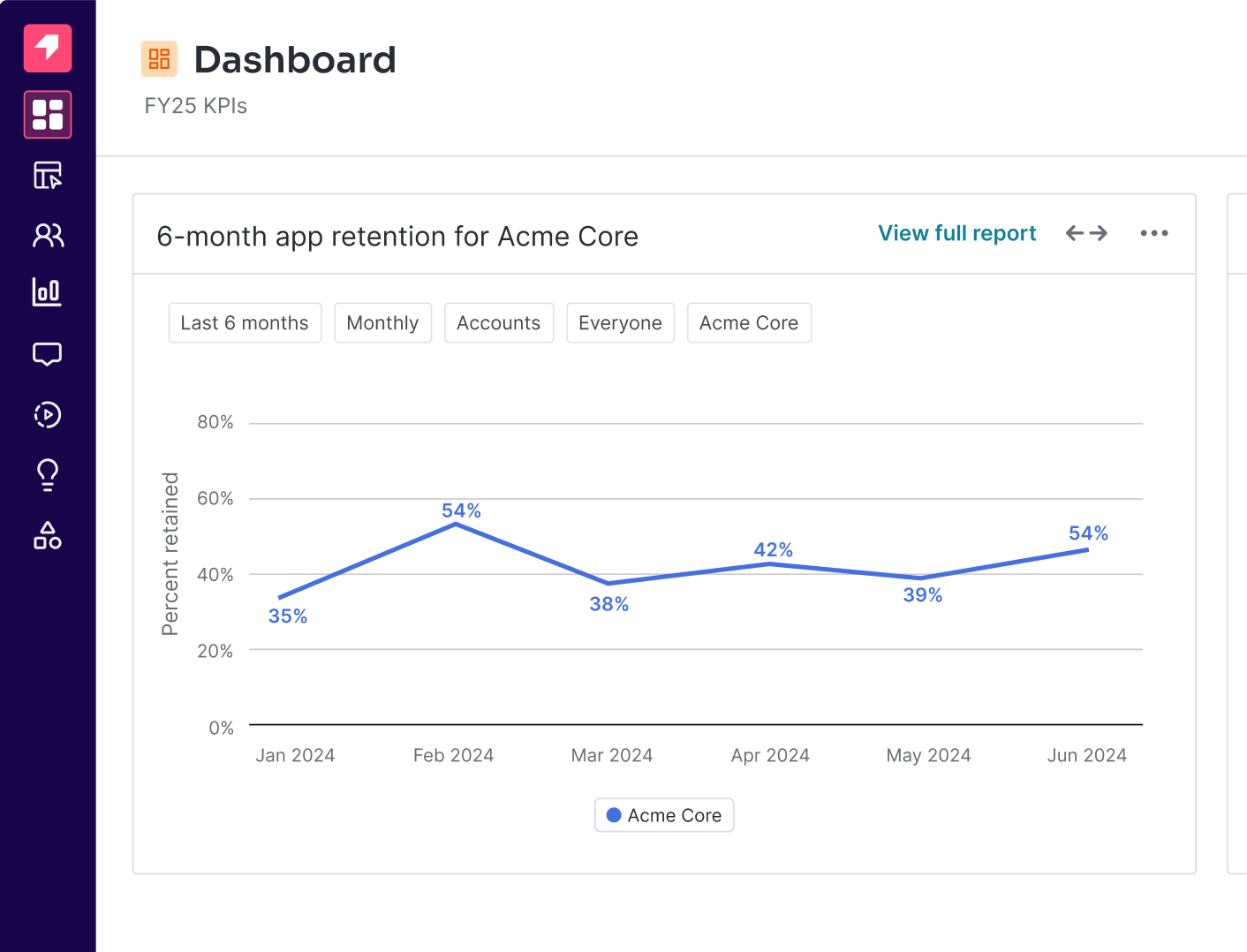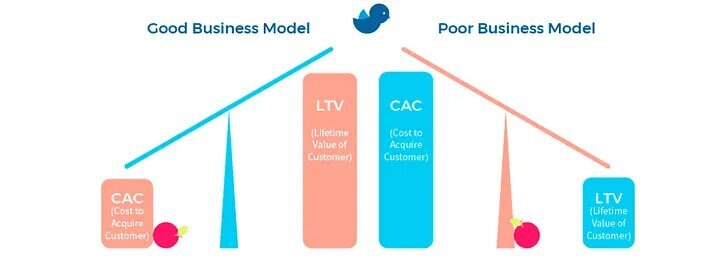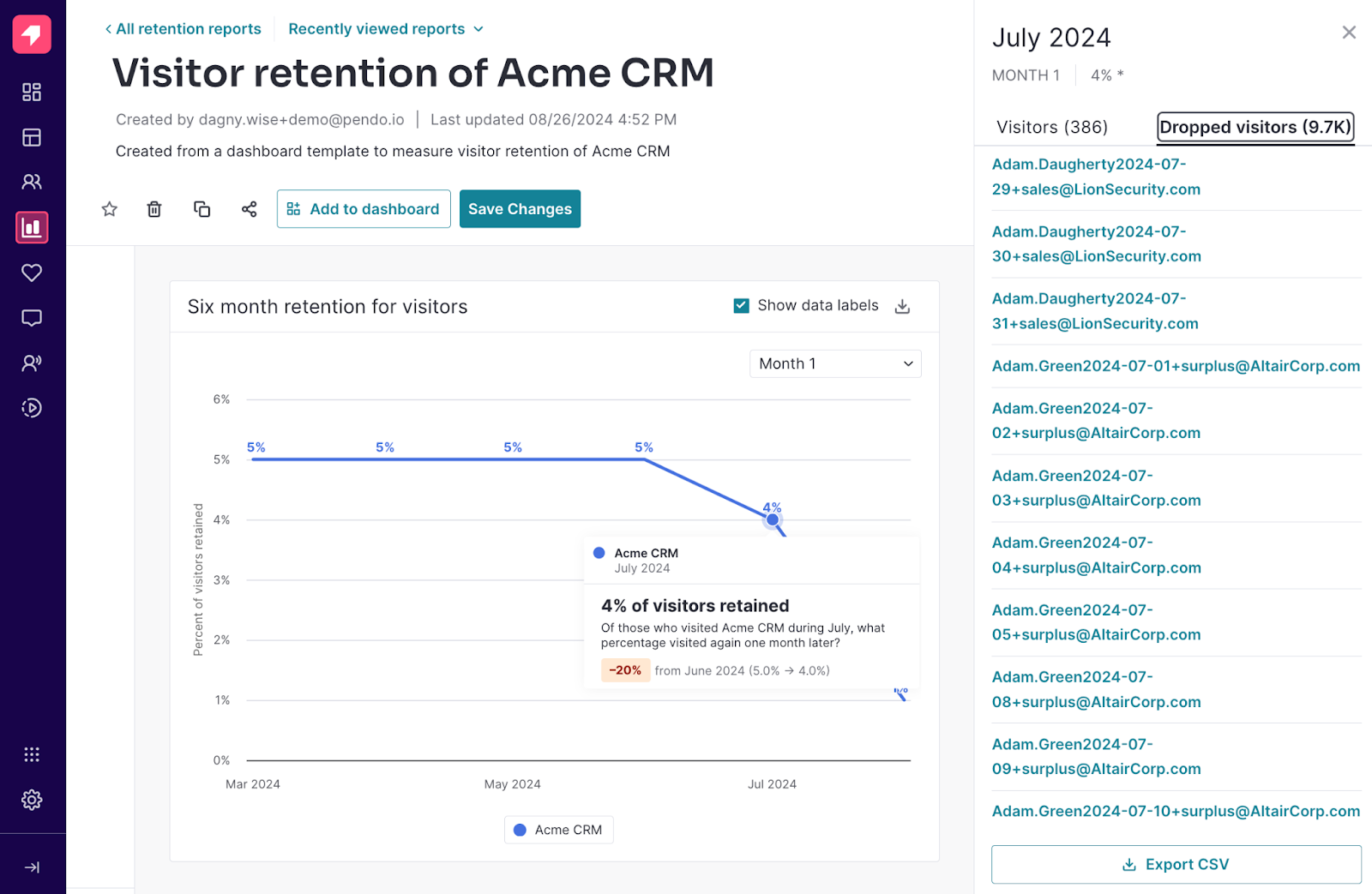競争の激しい「サービスとしてのソフトウェア(SaaS)」の世界では、新規顧客を獲得するだけではなく、顧客を維持することが重要になります。というのも、顧客を維持することは、新規顧客を獲得することよりもはるかに収益性が高いからです。実際に、Bain & Companyの調査によると、リテンションが5%増加すると、最大95%の利益増加につながる可能性があるという結果が出ています。しかし、多くのプロダクトリーダーは顧客の獲得に重点を置きすぎて、既存の顧客を維持することには十分注意を払っていません。
Retention tells you how well your product keeps users coming back, turning casual visitors into loyal customers and advocates. It isn’t just a number on a dashboard—it’s a powerful indicator of product success, customer satisfaction, and growth potential.
あらゆるプロダクトマネージャーがリテンションにこだわるべき理由について、Pendoのプロダクトアナリティクス担当シニアディレクターであるRyan Salomonに話を聞きました。この2部構成シリーズの第1部では、リテンションがSaaS企業を成長させる秘訣となる理由に加え、リテンションが他の主要な指標とどのように交差するのか、そしてPendo独自のユーザーリテンション調査に関する驚きのインサイトをご紹介します。
This is part 1 of our interview with Ryan Salomon. Catch up on part 2 of his insights here.
Q:プロダクトリーダーがユーザーリテンションを重視すべきなのはなぜですか?
A: Retention is the clearest indicator of product-market fit and long-term customer satisfaction. It’s what’s led founders like Uri Levine of Waze to create $1 billion apps. Retention tells you how well your product resonates with users beyond the initial adoption phase. If you’re only focused on acquisition without retention, you’re filling a leaky bucket—you’re constantly bringing users in at the top, but they’re slipping out at the bottom.
リテンション率が高くなっているということで、チームがプロダクトのどんな問題もしっかり解決していること、またはユーザーが関心を維持し戻ってきてくれるように顧客ニーズを満たしていることを確認できます。一方、リテンション率が低い場合は、オンボーディング体験、プロダクトの使いやすさ、サービスの知覚価値などで、何らかの不安点があることを示唆しています。
Q:「リテンション」指標は、どのチームが担当し責任を負うべきですか?
A: User retention is a team sport. Everyone, from the CEO down to the customer success teams, should care about retention. It shouldn’t just be the responsibility of product team, it should be the responsibility of the entire company.
- プロダクトマネージャーにとっては、リテンションは機能やアップデートがどれだけユーザーに受け入れられているかを示す直接的な指標です。
- マーケティング担当者にとっては、リテンションは獲得したユーザーの質と、そのユーザーが理想的な顧客ペルソナと一致しているかどうかを示す尺度になります。
- カスタマーサクセスとサポートの面では、通常、リテンションデータが主な焦点となります。このデータにより、ユーザーが行き詰まっている、または何らかの摩擦に遭遇している領域が浮き彫りになり、リテンション率が低い場合には全体的なチャーン(解約)リスクが把握できます。
「リテンションレポートはカスタマーサクセスチームにとって非常に貴重なものです。これは、お客様が当社のプロダクトをどのように利用しているかを時系列で明らかにするだけでなく、当社の顧客行動の影響を測定するのにも役立ちます。これらのパターンを追跡することで、新規顧客エンゲージメント戦略や顧客教育戦略が実際に定着化しているのか、成長を促進しているのかどうかを確認できます。また、Pendoを使用すると、書籍、ペルソナ、業種などのメタデータによって顧客をさらにセグメント化できるため、使用状況をさらに深く分析し、さまざまな顧客セグメントに合わせてアプローチを調整できます。」
— Pendoのカスタマーサクセスディレクター、Stacy Osorio
Pendo pro tip: Keep your retention reports centrally located across teams on your Dashboard in Pendo.
Q:ユーザーリテンション率は、顧客生涯価値、チャーン、定着率などの他の主要業績評価指標とどのように相関していますか?
A: Retention is the bedrock upon which other key metrics are built. If you increase retention, you’re directly increasing customer lifetime value (LTV). Meaning, customers who stick around longer inherently spend more on your digital product over their lifetime.
And when your customer lifetime value (LTV) rises, this allows you to invest more in acquiring new customers while maintaining a healthy LTV/CAC (customer acquisition cost) ratio. In practice, if a SaaS company increases its retention rate by 10%, lifting LTV from $10,000 to $11,000, it can afford to increase acquisition costs from $2,000 to $2,200 per customer—enabling more aggressive growth strategies without compromising profitability for the company. This is why companies who nail retention often become unstoppable growth engines.
For churn, retention and churn are inversely related. Meaning when retention is low, churn is high. This is again why it’s important to remember that initial adoption doesn’t always equal long-term success. And retention is the only true measure of sustained value.
Q:リテンションの追跡と改善を行う際にプロダクトマネージャーが犯しがちなミスとは?
A: One common mistake I’ve seen is treating retention as a static number that you just monitor periodically. Before we, at Pendo, really focused on retention, it was merely a block on our dashboard that got updated now and then. If your user retention reporting isn’t visualized and constantly in your face, it’s easy to ignore.
もう1つの間違いは、リテンションデータを誤ってセグメント化することです。ユーザータイプ、行動、使用している機能など、さまざまなコホートにわたりリテンションを調べて、これらの数字の背後にあるニュアンスを明らかにする必要があります。
プロダクトアナリティクスのスキルと専門知識を深めましょう。(英語)
最後になりますが、プロジェクトマネージャーは、解約したユーザーから学ぶ機会を活用しないことがよくあります。エンゲージメントの高い顧客に焦点を当てるのは自然なことですが、解約した顧客に連絡することで、ポジショニング、ロードマップ、顧客教育戦略に役立つ貴重なインサイトを得ることができます。
Pendo pro tip: You can pull the list of your unretained users right from your retention report in Pendo.
Q:リテンションに重点を置くことは、長期的な成長と顧客ロイヤルティにどのように役立ちますか?
A:リテンションを優先する企業というのは、本質的にはカスタマーサクセス(顧客の成功)を優先している企業です。ユーザーのエンゲージメントと満足度を長期的に高く維持するものに焦点を当てることで、自然と顧客体験が向上し、解約が減り、ロイヤルティが育成されます。
This loyalty turns into advocacy, which is one of the most powerful growth drivers. In fact, word of mouth drives $6 trillion in annual global spending and is responsible for 13% of all sales. As Airbnb co-founder and CEO, Brian Chesky, has referenced, it’s better to have 100 customers that love you, than a million that just sort of like you. Because loyal customers are more likely to refer others, leave positive reviews, and expand their usage over time. It has a compounding effect.
Start building a culture where retention is everyone’s job, and watch as your product goes from good to indispensable. Benchmark your user retention against others in your industry and region.



![[object Object]](https://cdn.builder.io/api/v1/image/assets%2F6a96e08774184353b3aa88032e406411%2F16b6f2565d1d4a5585db322386f9be7f?format=webp)
![[object Object]](https://cdn.builder.io/api/v1/image/assets%2F6a96e08774184353b3aa88032e406411%2F728d67faa5f64299b8f8f0b138881fb5?format=webp)
![[object Object]](https://cdn.builder.io/api/v1/image/assets%2F6a96e08774184353b3aa88032e406411%2Fc08c4160a2724c4fa3d365eb43791b09?format=webp)

